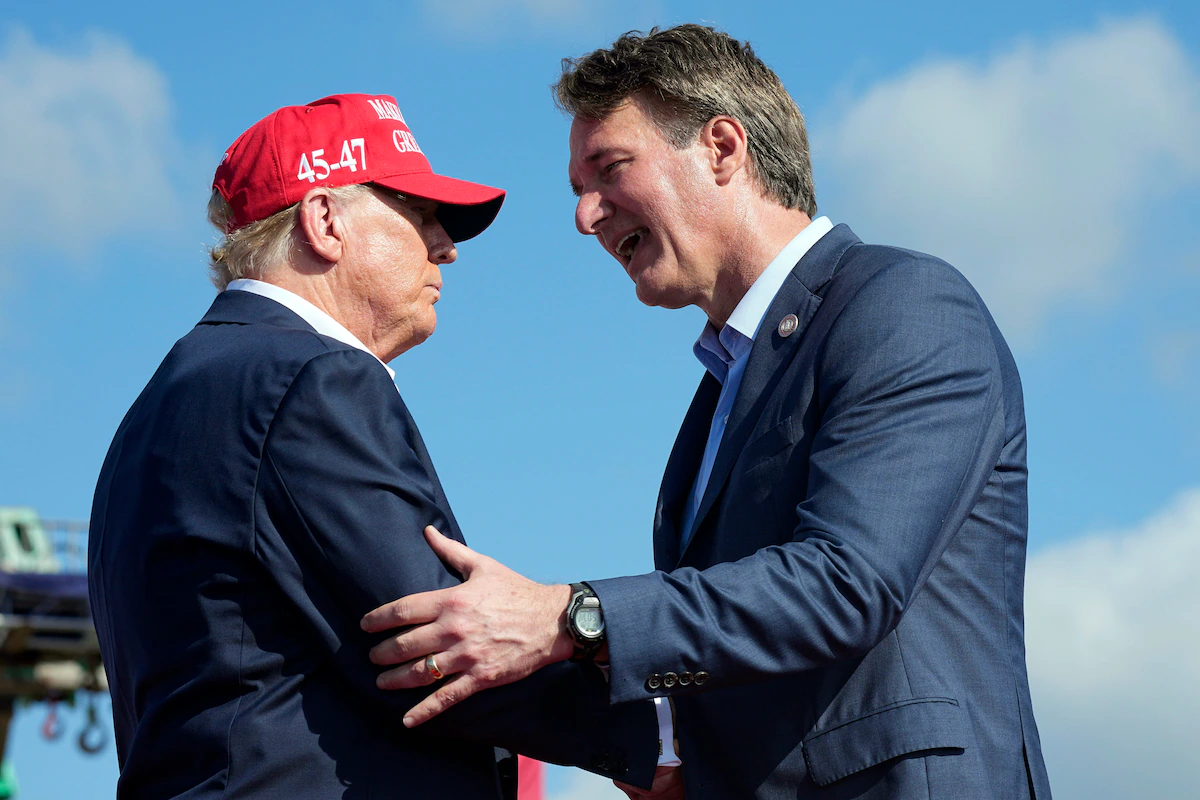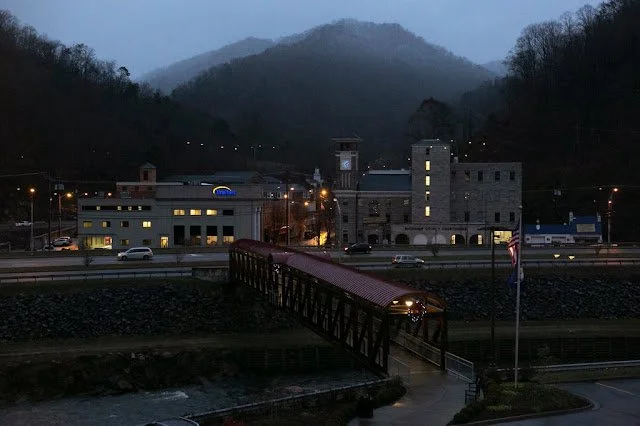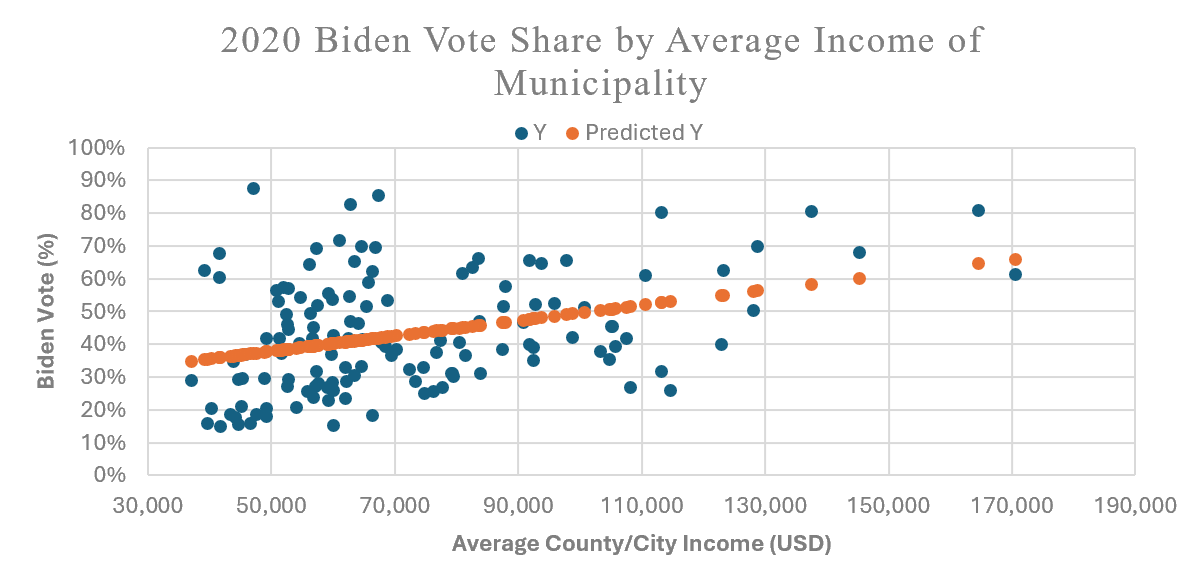Virginia and the Politics of Unpredictability
Virginia and the Politics of Unpredictability
Virginia’s rightward shift should surprise no one and cements the state as solidly purple.
(President Donald Trump, left, rallies with Virginia Governor Glenn Youngkin, right | SOURCE: WRIC Richmond)
Remember the 2019 Virginia elections, when the Democratic Party captured the Virginia General Assembly, in addition to holding every elected statewide office in the Commonwealth?
Out came a flurry of optimism over the permanence of Virginia’s political shift, exemplified by the New York Times opinion “What Democrats Should Do Now That They Have Turned Virginia Blue.”
Yet, half a decade later, after three Republican wins in state executive races and a Republican rebound in 2024’s presidential and senatorial elections, it is clear many forgot that Virginia’s politics defies simple characterization.
Virginia has consistently vacillated between political affiliations this century. Since 2001, Democrats and Republicans have each won nine out of 18 elections for state executive offices.
Democrats have prevailed in four out of six gubernatorial races, with the parties splitting the lieutenant governorship and Republicans taking four attorney general races. Over that period, the average statewide race for governor, lieutenant governor, and attorney general favored Republicans by just over a point.
Yet, this obscures the fact that Virginia had been a solidly Republican state for a brief period at the end of the twentieth century. Now, Republicans have failed to win a U.S. Senate election in Virginia in 22 years.
The twenty-first century ushered in a Virginia that is highly competitive in the General Assembly and statewide executive elections, yet consistently votes Democratic in presidential and senatorial races.
While there have been too many changes within the parties and the Commonwealth itself to link this development to any one factor, Virginia’s geography provides important context. The evolving political alignment of Virginia can be tied to the shift in the political leanings and influence of three of the Commonwealth’s regions.
In southwestern Virginia, there has been a large-scale party switch by Democratic voters to the Republican Party. In the rural center of the state, Republicans have experienced a notable increase in turnout, with the turnout of Democratic voters staying stagnant.
Northern Virginia, particularly the D.C. metro area, is the inverse of the southwest, with booming population growth bringing new Democratic voters, as well as many Republicans switching parties. Finally, the Commonwealth’s large cities, particularly those with high African American populations, were and have continued to be dominated by Democrats.
Southwestern Virginia was not always intensely Republican. Buchanan County, on the tri-state border of Virginia, West Virginia, and Kentucky, voted Democrat in the 2000 and 2004 presidential elections, then proceeded to hand Republican Donald Trump over 80% of its vote in 2020 and 2024.
(Grundy, Virginia, the county seat of Buchanan County | SOURCE: The New York Times)
Buchanan County is an example of dwindling Appalachian support for the Democratic Party. The decline in Democratic votes in Buchanan County has far outpaced the county’s population decline. Republicans had gained voters despite the population loss until a slight decrease in vote total, but not vote share, in the 2024 presidential election.
Population loss is largely due to a stagnant economy, and Buchanan is the poorest county in the state. Coal production, a large employer in the region, has continually fallen in the Commonwealth this century. Republicans positioning themselves as the pro-energy party has helped to attract voters in the region, though Republicans flipping these counties means less electorally due to their population declines.
A more electorally consequential shift has occurred elsewhere in rural Virginia. In opposition to the southwest, the rightward trajectory of other rural areas is indicative of growing Republican turnout and not necessarily a party switch.
Campbell County represents a typical Virginian county in many ways: a rural county that is adjacent to an urban area, featuring slow, steady population growth. From the 2008 to 2020 presidential elections, Campbell County was one of eight counties in Virginia to see Democratic vote counts stagnate, staying within 1,000 votes of their 2008 levels, while Republicans gained over 3,000 votes.
Trump continued to add voters in Campbell County this cycle, with the county continuing its rightward shift.
However, just as increased rural turnout has been a consistent theme of the Trump-era Republican Party, struggling in the suburbs has been as well. Fairfax County, across the Potomac River from Washington, D.C., is a formerly Republican-leaning county that is now represented by seven Democratic senators and 15 Democratic delegates in Richmond.
The Northern Virginia shift goes beyond simply losing suburban voters. These Northern Virginia communities have seen much of the immigration to a state where one in 10 eligible voters are foreign-born, a figure that has tripled in the last three decades. First-generation Americans lean Democratic, and the diversification of Northern Virginia plays badly for Republicans, whose strength is primarily with white voters.
Now, less than half of eligible voters in the Commonwealth were born in the state, with many moving to Northern Virginia for government employment, a bloc Joe Biden carried by 18 points in 2020.
The sheer scale of the political shift dwarfs any rural increase in turnout. In Fairfax County, Trump received 33,000 fewer votes than John McCain did 12 years previously, despite population gains, while Biden received nearly 110,000 more. The largest Republican gain in any county between 2008 and 2020 was in nearby Loudoun County, where Republicans gained nearly 19,000 votes: yet Democrats gained 64,000.
Tuesday saw President Trump rebound on some of these losses, yet Northern Virginia stayed solidly blue, precluding Trump from truly making Virginia competitive. Fairfax, Loudon, Prince William, Arlington, and Alexandria all shifted over 5 points in Trump’s favor, yet he lost each by an average of 27 points.
Three of the five wealthiest counties in America lay within Northern Virginia, with Fairfax being the fifth richest in the country. After Trump’s populist takeover of the Republican Party, a county having a high average wealth is very predictive of Democratic leaning.
Urban areas, some of which are very impoverished, prevent average wealth from being an accurate predictor of political leanings in Virginia. Democrats sweep most ultra-wealthy areas, including wealthy suburbs and wealthy cities like Arlington, but the two parties split the poorer areas.Republicans now sweep most poor, rural counties, and Democrats have maintained control over most poor, urban counties (and urban counties in general). The Democratic Party’s dominance in Virginia’s urban areas has been more long-running than its victories in suburbia. It continues to be based on the loyalty of African American voters, who make up a majority or plurality in several cities and counties, including Richmond and Hampton.
In general, it is clear that the key to Republican competitiveness, especially in federal elections, lies in balancing the continued rural turnout boom the party is experiencing with a return to some semblance of competitiveness in Northern Virginia.
Glenn Youngkin’s 2021 gubernatorial victory saw him do both, including stemming the tide in counties like Fairfax, where he overperformed Trump’s 2020 performance by over six points. The growth imbalance of Democratic- and Republican-leaning areas does not bode well for Republicans down the road, but the Old Dominion always finds a way to be politically competitive.







